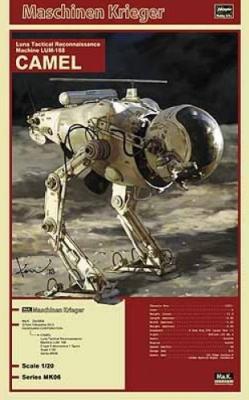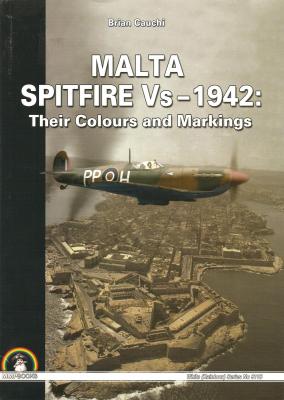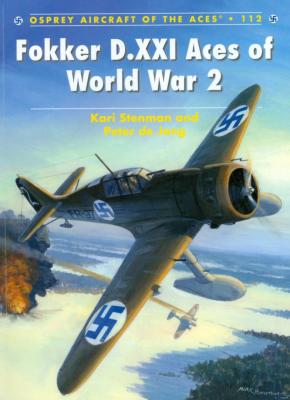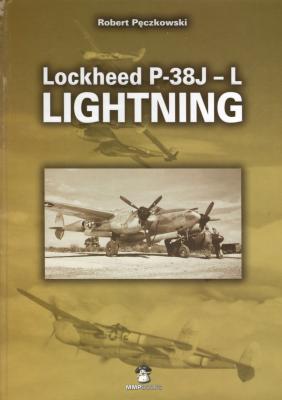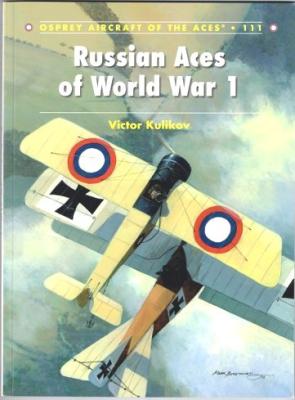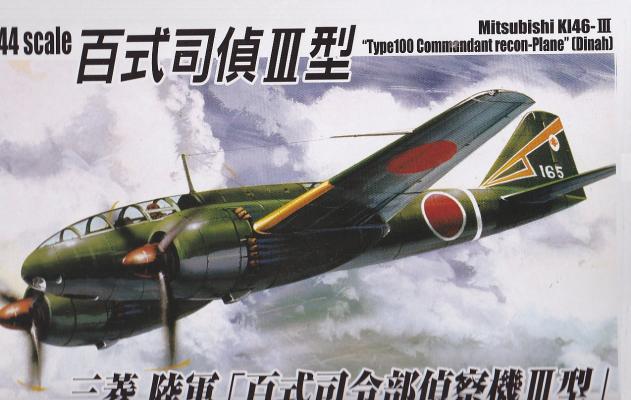Quickboost has issued this set of 12 Compressed Air Cylinders for the Great Wall Hobby P-61A/B. There are 12 cylinders perfectly case in grey resin and attached to a single carrier at the bottom. Cast guards are in place to make sure no damage is done. Removal is simple in just cutting the cylinders from there base with a sprue cutter and removing a few faint seam lines.
What's New
As a bit of background, and from Wikipedia, the Maschinen Krieger universe is a science fiction universe created by Japanese artist and sculptor Kow Yokoyama in the 1980s. The franchise originally began as the science fiction series SF3D which ran as monthly installments in the Japanese hobby magazine Hobby Japan from 1982 to 1985. To develop the storyline, Kow Yokoyama collaborated with Hiroshi Ichimura as story editor and Kunitaka Imai as graphic designer.
The title of this one says it all. This book is dedicated completely to covering the markings and colors of Spitfire Mk Vs on Malta in 1942. Not all aircraft on Malta, not all 1942 Spitfires, and not anything else – JUST Spitfire Vs, JUST in 1942 and JUST those based on Malta!
The Product
The kit arrived in Dragon’s standard smaller box common for a kit of this size. All the parts were well protected in the typical Dragon poly bags. Also included was the standard instruction sheet, a photo-etch fret and a small decal sheet. The kit features 2 crew figures, newly tooled condenser w/modified engine grille, Vickers K machine guns, jerrycans w/photo-etch details and photo-etch sand channels.
Normally I don’t build 1/72 scale. The armor is too small and my eyes are too old. There is a guy in our club named Scott who only builds 1/72 and because I thought how funny it would be to enter something into our upcoming contest in 1/72 scale to surprise him, I picked this kit to review.
It is a Village House, which is molded in color (although it still will need to be painted), and it is awesome. I’ll admit that building this kit was a lot of fun, my son helped me because it went together so easily, and it is going to look cool once I add in the extras.
In less than two months, France lost 290,000 men killed or wounded and 1,900,000 taken prisoner in its massive defeat that heavily relied upon a strategy based on solid defensive fortifications. Germany’s leaders were not going to fight the First World War again, in spite of all appearances. After their successful Blitzkrieg through Poland in September 1939, they seemed to have run out of steam, settling down to wage a “Sitzkrieg” or “Phoney War” (dôle de guerre). While the world waited through that first bitter, particularly severe winter of World War II, France began calling up reservists. Confident that their investment in the Maginot Line stopped the Germans in their tracks, and in their superior quantity and quality of French armor, French generals became overconfident while morale in their conscript army wore thin as time ticked by.
The Fokker D.XXI single seat fighter was developed in the late thirties to replace the Fokker biplane fighters serving with the Dutch Army Aviation Branch. Although used in relatively small numbers by the Dutch, and quickly overwhelmed by the Luftwaffe during the German invasion, the type was also adopted by the Danes, but its major operational use was with the Finnish Air Force in the Winter War and afterwards . Faced with shortages of Bristol Mercury engines, the Finns also produced a variant powered by American Pratt & Whitney R-1535 Twin Wasp Junior engines. These aircraft had some additional modifications, and were operated on both wheels and skis, quite successfully against the Russians, who didn’t fare too well against the highly trained and experienced Finnish pilots.
MMPBooks (Mushroom Models Publishing) has a proven track record of offering some of the best publications on the market and this latest addition to the collection is no exception. Written by Robert Peczkowski and illsustrated by Artur Juszczak, this book is another example of the excellent publications coming from MMPBooks There are 33 books in the “Yellow Series”, featuring a wide range of aircraft from before WW II through the end of that conflict, and this book, featuring the Lockheed P-38J-L is a welcome addition becoming the 34th book in the series.
Volume 111 in Osprey’s Aircraft of the Aces series presents the interesting story of Russian Aces of World War I. The 96-page soft cover book is the result of author Victor Kulikov’s lifelong interest in Imperial Russian aviation in WWI. He is a recognized expert, having written articles on the subject for Windsock International, Cross & Cockade, Avions, Aero Journal and Over the Front, and co-authored Flying Machine Press’ massive hard cover book Imperial Russian Air Forces. In Osprey’s Russian Aces of World War I, Kulikov draws from recently sourced Russian military and private archives to detail the exploits of each of the aces in a thoroughly researched and well-written narrative combined with a number of previously unpublished period photos.
The Aircraft
The Mitsubishi Ki-46 Dinah was a reconnaissance platform for the Imperial Japanese Army. The crew of 2 were in separate cockpits, with the pilot and observer separated by a fuel tank (shudder!) The Ki-46II version was faster than any Japanese fighter in the 1940-41 time frame, and the IJAF thought it should be immune from interception. The advent of the P-38 in Pacific combat caused rethought of this idea.
The solution to the speed problem was more powerful, fuel injected Mitsubishi Ha-112 engines, which pushed the top speed to a respectable 391 mph. The nose was redesigned to be more aerodynamic, with no step for the canopy, but a full bubble instead. Also, fuel capacity was raised by putting another fuel tank in the nose in front of the pilot (shudder again!).


